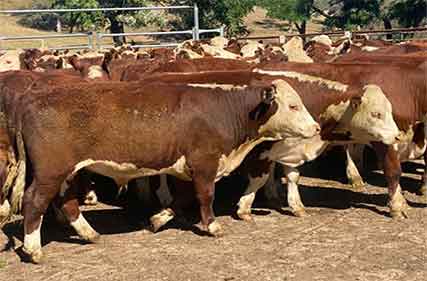
Prices for domestic feeder steers sit at 300-330c/kg. By Simon McKittrick, Logical Livestock and Property The recent hot weather and subsequent increase in sale cattle have led to downward pressure across most categories, with decreases of up to 30c and even 50c/kg for secondary type animals.
Despite this swift decline, many anticipate that with some decent rain, the onset of Autumn, and oats crops sprouting, prices could rebound quickly.
Interestingly, both physical yards and online offerings have remained steady, indicating resistance from producers to accept current rates. There are also enough areas with feed to hold stock for a few weeks, with hopes of an Autumn break improving conditions. With the BOM forecasting a La Nina for Spring, stable interest rates, and strong demand from the US, the outlook appears promising for the year ahead. While time will tell, there’s optimism that we can leave 2023 behind us. Additionally, cattle numbers on feed reached a new peak in the December quarter of 2023, with nearly 1.3 million head, marking a 3% increase from the previous quarter and nearly 150,000 more than last year. Feeding capacity also hit a new high, particularly in NSW, SA, and WA, while Queensland and Victoria experienced declines due to dry conditions. Queensland remains the leader in lot feeding activity, accounting for 58% of the national total in December.
New South Wales set a new record with 372,708 head, marking a 7% increase from September and 17% from last year. Source Beef Central.
The EYCI is currently sitting around the 629.8c mark, while the Aus dollar is sitting just over US 65c.
|
